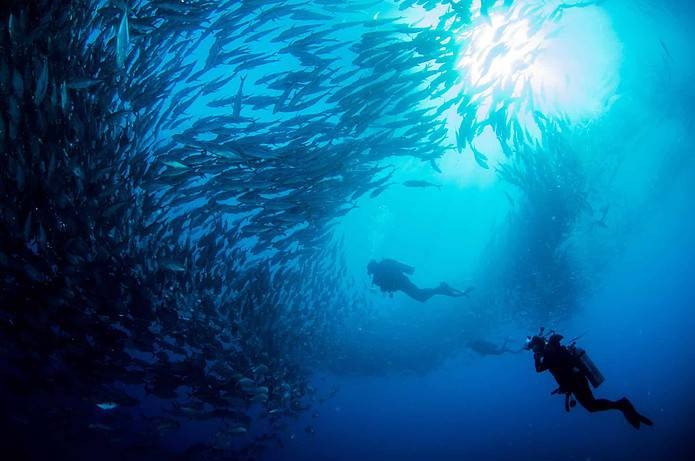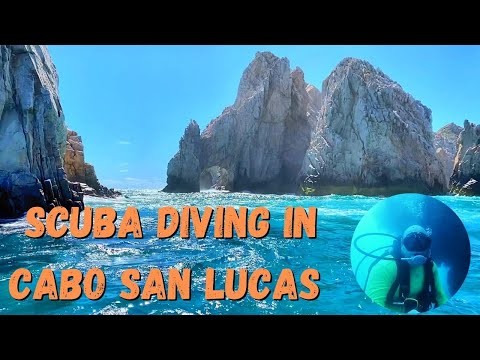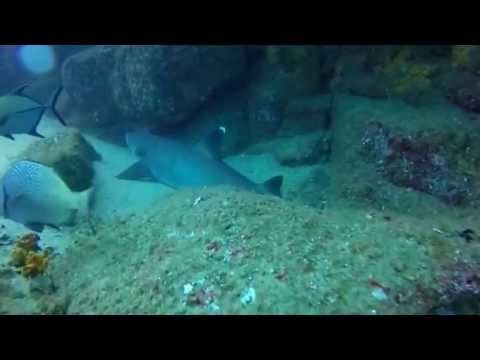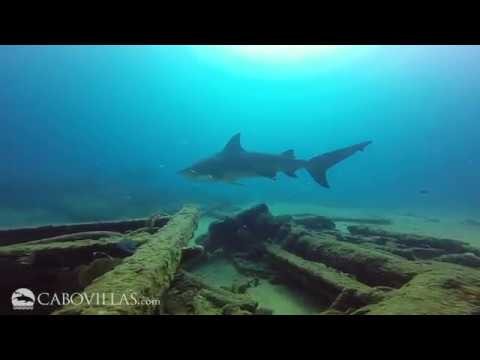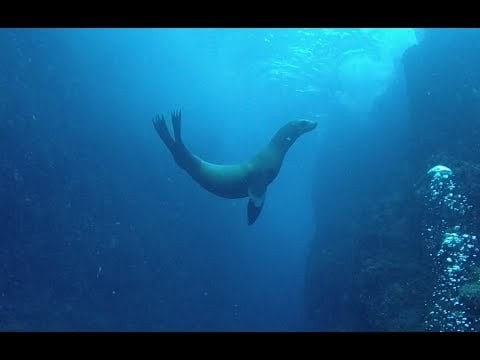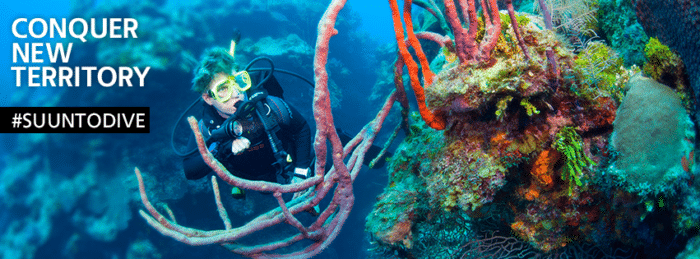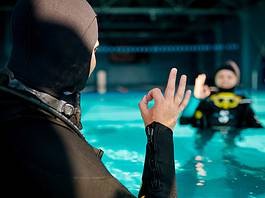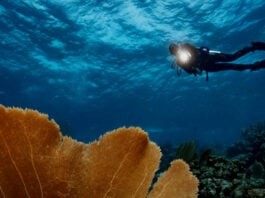Scuba Diving Cabo San Lucas is part of our Top Dive Sites of the World
Lying at the tip of Baja California, straddling the Sea of Cortez and the Pacific Ocean, scuba diving Cabo San Lucas is a must for any diver wanting to experience stunning marine life. Cabo is Blessed with great weather, meaning you can visit year-round. Average air temperatures range from an average of 66F/19C in the winter to 86F/30C in the height of summer. The water temperatures in not far behind, ranging year-round from 68F/20C to a much warmer 84F/29C in the height of summer.
With such a great climate and conditions, you can visit Cabo any time of year, although if you are interested in encountering some of the “big stuff,” then the best time for a scuba diving Cab San Lucas trip is December to May.
Cabo San Lucas is home to a stunning array of marine life. Plenty of pristine coral reefs teeming with marine life, although Cabo is more famous for encountering larger animals and sharks. Scuba Diving Cabo San Lucas at the right time, you can encounter bull sharks, orcas, humpback whales, whale sharks, and even the majestic blue whale. If all that was not enough, you also have a chance to see manta rays and mako sharks.
Location
The North Wall
A well-protected site relatively close to the Cabo San Lucas marina, the North Wall is more often than not the first dive of a scuba diving Cabo San Lucas trip. The site varies in depth from 20 ft/6 m to 100ft/30m, making it an ideal site for every level of divers, from relative novices to experienced divers.
The dive site starts on a sandy slope dropping to around 25F/7.5m, where the rocky wall starts. The wall is primarily made up of a medium and large boulders and provides a home and shelter for a dizzying array of marine life and critters. Due to its proximity to the marina, the site is relatively sheltered, making diving conditions here ideal. The North Wall has minimal currents, and visibility is good year-round.
Diving the North Wall, much smaller marine life can hide in the rocks and swim around. Looking at the rocky reef, you can encounter slipper lobsters, moray eels, scorpionfish, and even sea horses lurking on the rocks. Bigger creatures are also around, and you can encounter porcupine fish, pufferfish, guitarfish, and the occasional sleeping whitetip reef sharks.
Pelican Rock
Pelican Rock is a stunning dive site and the snorkeling capital of Cabo. The site is often the highlight of any family scuba diving Cabo San Lucas. Divers can explore the pristine reef, while non-diving family members can snorkel and experience the wonders their family members see below the waves.
Like the North Wall, Pelican Rock suits divers of every experience level. Dive schools often use the shallows to take beginners, while experienced divers get to sample the depth of Pelican Rock. The dive site starts as a sandy slope at 10 ft/3 m and gently slopes down to around 70ft/21m. eventually, you arrive at the start of the wall, which drops down an impressive 500ft/152m. on top of the sandy bottom is the large pinnacle that rises from the sea floor above the water. It is often claimed that the dive site got its name from the shape of this rock, which looks like a pelican sitting on the water at a stretch. In reality, the site got its name from a much smaller nearby rock that invariably has a bunch of pelicans sitting on it.
Diving the shallows off Pelican Rock, you can encounter all the usual reef culprits, including seas bass, moray eels, and porcupine fish. Along the reef, there are octopuses, sea lugs, and nudibranchs hiding amongst the reef. Large schools of sardines can often be found around the top of Pelican Rock. A little further out in the blue, there is some interesting action, including Mobula rays in the right season, and if you are lucky, whale sharks have been known to pass by.
Cabo Pulmo National Park
A UNESCO World Heritage Site, Cabo Pulmo National Park is home to stunning diving and is often one of the best experiences on a scuba diving Cabo San Lucas trip. The national park is home to the most northern reef in North America. While it was once endangered, the park is home to healthy corals and abundant marine life.
Three are two distinct diving seasons in the park. The colder season is between December and March. During this time, there is some serious large marine action in the park, and you can encounter grey whales, humpback whales, and lots of mobulas. Also, this is the time of year when the sea lions tend to be at their most numerous and active in the park, although they can be seen at other times.
The other distinct season is when the water is warmest in the region, from August to November. During this period, you can encounter hammerheads relatively regularly. Those of us who the diving gods are smiling upon will also get the chance to encounter whale sharks during this period.
While the big stuff is exciting, scuba diving at Cabo Pulmo National Park offers much more. Over 6,000 different species have been documented in the area. Diving in the park, you can encounter everything from corals’ heads and sand eels to groupers, turtles, and reef sharks. Whether you are into bigger species or love marine macro life, the park teems with both.
Scuba Diving Cabo San Lucas Land’s End & Neptune’s Finger
Land’s End is one of the show’s stars of any scuba diving Cabo San Lucas trip. Land’s End, as the name suggests, lies at the tip of Cabo San Lucas. Its unique geographical location is when the Sea of Cortez meets the Pacific Ocean. This nutrient-rich environment means that the site is home to stunning marine life and corals. Dives at Land’s End are open to all levels of divers, with depths ranging from 15 ft/5 m to 70ft/22m.
Land’s End is also home to some stunning topography and is famous for its huge arch that divers can swim through. Aside from the topography, you can regularly encounter sea lions that come into the water to play with divers when not sunning themselves on the rocks. In addition, big schools of tuna and barracuda can be suspended in midwater.
Diving Land’s End, you can encounter a true aquatic mystery. One night in 1954, a large noise was heard near the arch. A while later, debris from the German American vessel the Lunderberg washed ashore on Cabo; however, no wreckage was ever found for nearly 60 years. Then miraculously, hurricane Odile came along in 2014 and, like some great aquatic detective, uncovered the wreck for divers to explore! The impact is open to all divers since it lies in about 40ft/12m of water.
Click here for more Top Dive Sites of the World
Brought To You By
Our Top Dive Sites of the World guide is brought to you by Suunto. We recommend that you use a Suunto Dive Computer when scuba diving or freediving at one of these dive sites. Suunto is the world’s leading dive computer designer and manufacturer providing diving instruments for recreational, technical, and freediving. You can find out more at Suunto.com.
